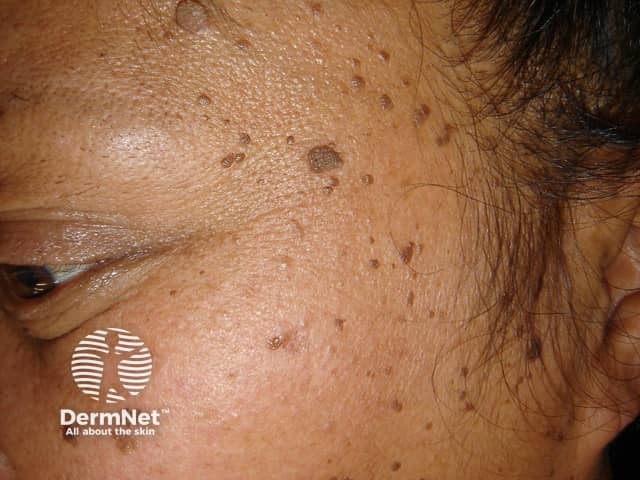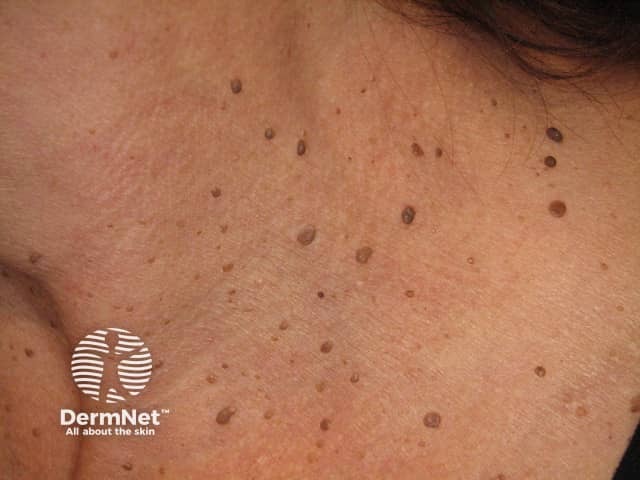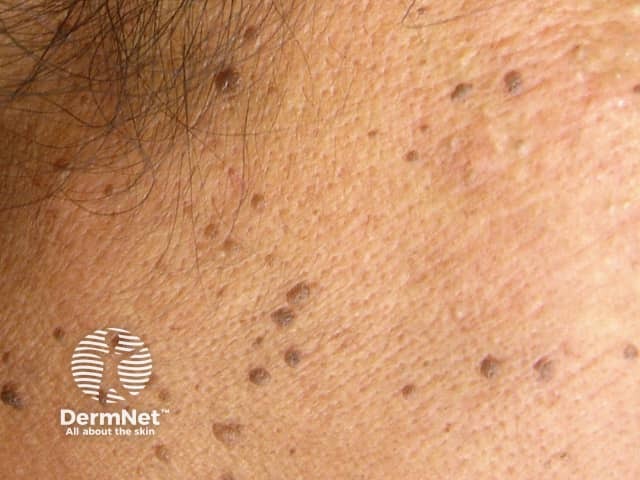Main menu
Common skin conditions

NEWS
Join DermNet PRO
Read more
Quick links
Author: Dr Mark Duffill, Dermatologist, Hamilton, New Zealand, 2008.
Introduction Demographics Causes Clinical features Diagnosis Treatment
Dermatosis papulosa nigra describes the presence of multiple, small, 1–5 mm diameter, smooth, firm, black or dark brown papules on face and neck.
Dermatosis papulosa nigra is common in people with skin of colour, with Fitzpatrick skin phototype 4, 5 or 6. It affects up to 35% of Black Americans. There is a lower frequency in African Americans with a fairer complexion. Dermatosis papulosa nigra also occurs among dark-skinned Asians and Polynesians, but the exact frequency is unknown. Females are more frequently affected than males.
Dermatosis papulosa nigra usually begins in adolescence. The incidence, number and size of lesions increases with age.
The papules of dermatosis papulosa nigra are identical to small seborrhoeic keratoses.
Dermatosis papulosa nigra is likely to be genetically determined with 40–50% of patients having a family history. It is believed to be due to a naevoid developmental defect of the hair follicle.
Dark coloured papules arise mainly on the cheeks and forehead but they may also be found on the neck, upper back and chest. Scaling, crusting and ulceration do not occur.
The papules are symptomless but may be regarded as unsightly.

Dermatosis papulosa nigra

Dermatosis papulosa nigra

Dermatosis papulosa nigra

Dermatosis papulosa nigra

Dermatosis papulosa nigra

Dermatosis papulosa nigra
No tests are needed as dermatosis papulosa nigra is diagnosed clinically. If there is any doubt a skin biopsy can be taken. Histology shows a seborrhoeic keratosis with markedly increased pigmentation of the basal layer of the epidermis.
Dermatosis papulosa nigra lesions are generally best left untreated. Complications of locally destructive treatment can include increased and decreased pigmentation, scarring and keloid formation.
Treatment choices include curettage, freezing with liquid nitrogen (cryotherapy) and electrodessication followed by curettage. Nd:YAG laser has also recently been reported to achieve excellent cosmetic results. Treatment is kept superficial to minimise the risk of complications.